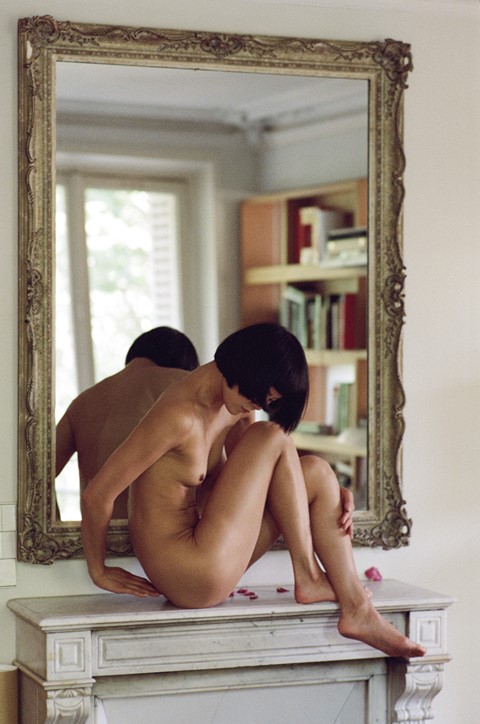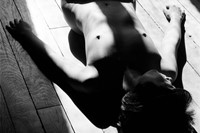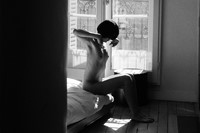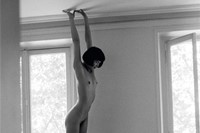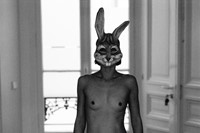Mary McCartney’s latest book, Paris Nude, documents New York-born comedian Phyllis Wang in her Parisian apartment
In a light-filled Parisian apartment, the naked form of a woman is draped across a bed, the floor, a cabinet, captured appearing calm and pensive on a sunny afternoon. The woman is New York-born stand-up comedian Phyllis Wang, whose delicate silhouette is the subject of Paris Nude – a series of photographs capturing the beauty of the nude body. Lensed by Mary McCartney, the images are gathered in a volume published by HENI, offering a personal, intimate take on one of visual art’s most commonly explored subjects.
Alternating between colour and black-and-white, the frames are intoxicatingly organic; it’s no surprise that the collaboration between McCartney and Wang arose as spontaneously and unpredictably as it then unfolded. “The whole idea of this book first came about from a total misunderstanding,” McCartney recalls. “I was emailing Phyllis about possibly taking some photographs of her, and I ended my email with ‘xxx’ – hugs and kisses – which she misunderstood as a proposal to do an X-rated shoot. I’d always liked her dainty, kind of 1920s look, so I considered the idea, and the project developed quite seamlessly from that point on.”
Over the course of two days spent in Wang’s Parisian Saint Germain home, the photographer captured her subject’s ever-evolving physical and emotional bareness, witnessing how she became increasingly comfortable with being exposed to the camera. “Before the shooting began, the two of us didn’t know each other very well,” says McCartney. “When we both arrived in her apartment, we were very much inside our own separate headspaces – thinking things, but not really saying them to each other. Throughout the shoot, we really both got to let our guards down, gain a true understanding of each other and build genuine trust. On the second day, we were a lot more bonded, and by the end of the whole experience I felt like we were good friends.” Sure enough, the evolution of Wang’s ease in front of the lense, as well as the synergy and trust developed with McCartney, is visible in the final result.
“I suppose some of it has to do with us both being women and having a better understanding of each other, but also of the process of becoming a woman and being comfortable with your body,” the photographer continues. “There was an inherent agreement on what we wanted to capture – namely the human form its simplest, most authentic state – and there was also this element of innocence which I wanted to convey. In the pictures you can tell how liberating the experience is for Phyllis, almost like a cleansing.”
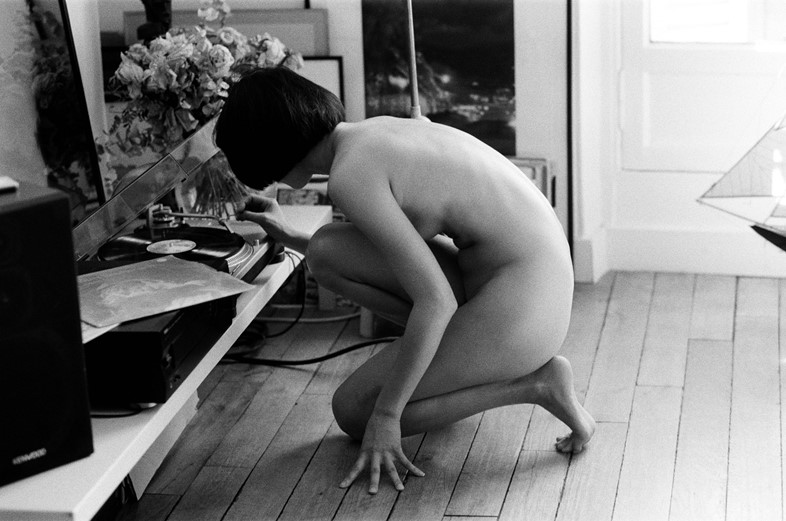
In terms of her own take on nudity in visual art, McCartney values honesty. “More often than not, the sexual or provocative nature of the nude doesn’t come from the nakedness itself, but rather from subtle, suggestive additions to it,” she says. “A pair of knickers will make you wonder what they’re hiding, but seeing the human form in its truest state is in many ways a lot less distracting or suggestive. It’s just someone laying themselves bare.”
McCartney’s attempt to capture the raw, almost primal simplicity of the nude body echoes her desire to ultimately connect with the third piece of the photographic puzzle – the viewer. “This body of work is not just about me and Phyllis,” the artist concludes. “The viewer is a key component of the story. How will the images influence them? Will they be able to relate to this world we’ve created, walk into it and lose themselves in it? That’s always in the back of my mind throughout the whole process.”
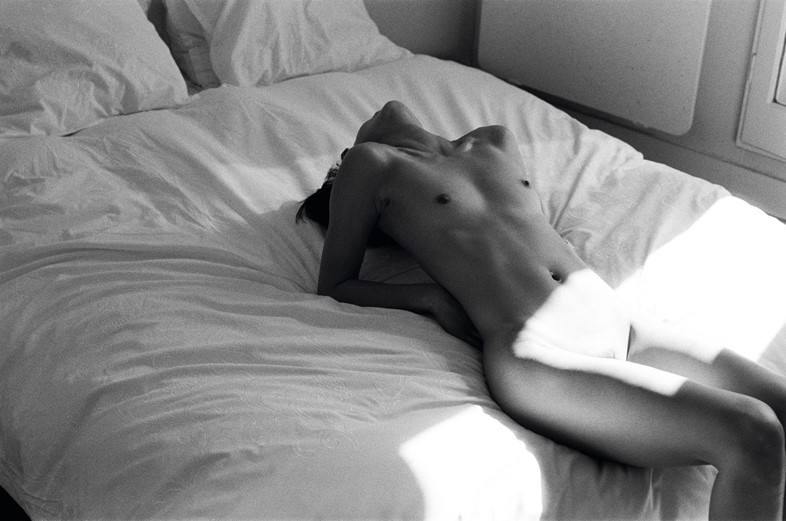
Mary McCartney: Paris Nude is published by HENI on February 7, 2019.
